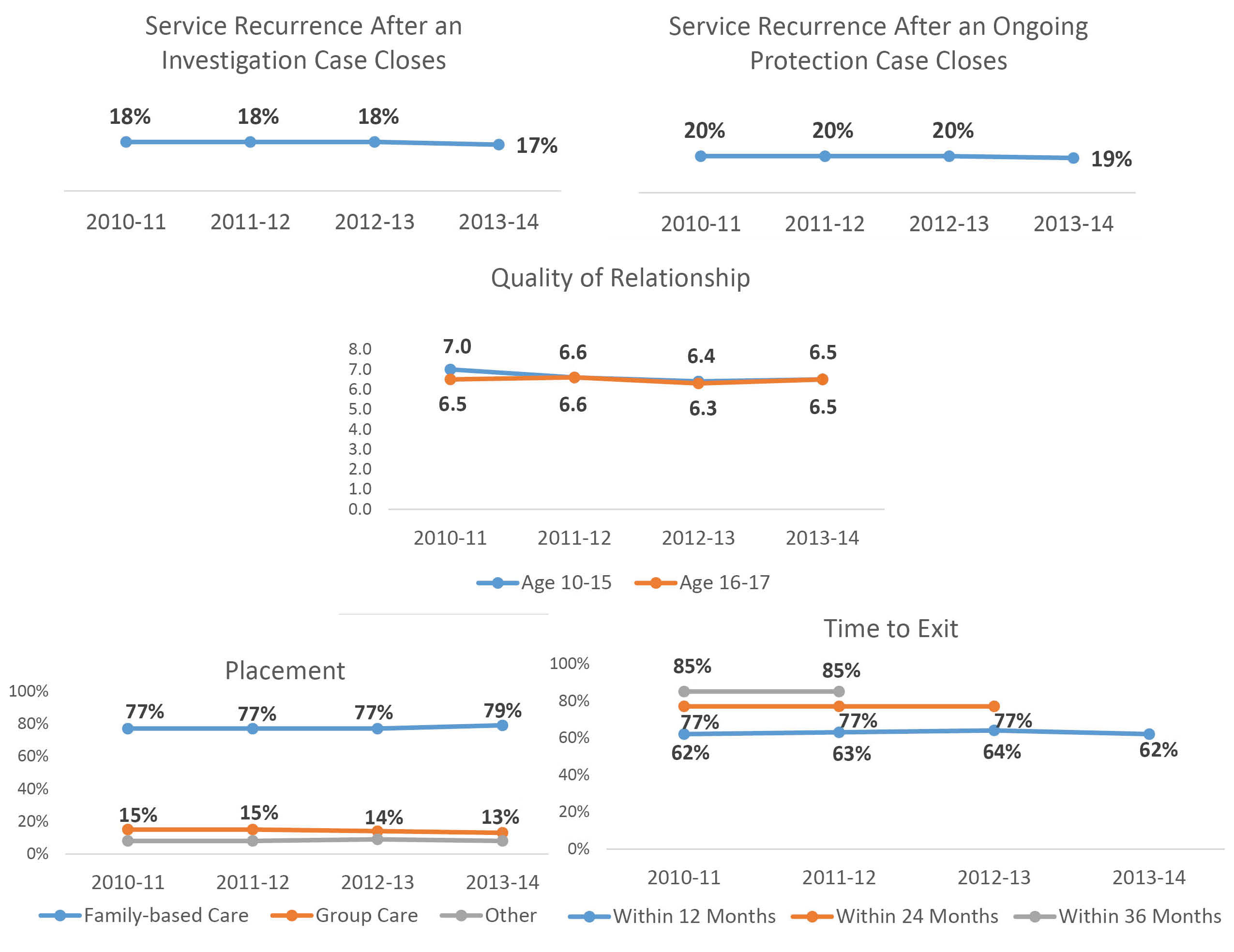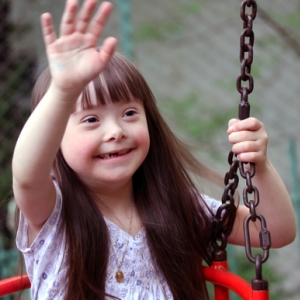In 2009, the Ontario Minister of Children and Youth Services established the Commission to Promote Sustainable Child Welfare. One of the commission’s strategies was to identify principles and concepts to “implement a new approach to accountability and system management.” Performance indicators were one of the mechanisms put forward by the commission to measure service performance in the outcomes of safety, permanency, and well-being of children, youth, and families on a provincial level.
The child welfare sector has lead the work of the Performance Indicator Project which began in April 2013. The impact of the project and results will continue to grow as the data and analysis develops over the next decade.
Children’s Aid Societies and Performance Indicators
Through the implementation of a provincial performance measurement and management system, Children Aid Societies (CASs) have taken an important step to enhance their accountability and their commitment to better outcomes for the children, youth and families they serve. The goal of this system and the reporting of performance indicators is to support effective organizational planning, oversight, and to generate increased knowledge aimed at improving services as well as monitoring and reporting outcomes.
Through the system and analysis of performance indicators, the child welfare sector will be able to answer the following strategic questions:
- What is important about the work that a CAS does?
- How can we better understand the impact services are having on the safety, permanence and well-being of the children, youth and families being served?
- How well is an agency serving children and families?
- How likely is an agency to continue to improve?
Facts and figures
To date there have been 26 provincial performance indicators approved by the Ministry of Children, Community and Social Servicess measuring the following five areas: 16 service performance indicators measuring the safety, permanency and well-being of a child, six organizational capacity performance indicators and four governance effectiveness performance indicators.
Of those 26 provincial performance indicators approved, five have been identified as the publicly reported service performance indicators:
- The recurrence of child protection concerns in a family after an investigation
- The recurrence of child protection concerns in a family after ongoing protection services were provided
- The days of care by placement type
- The time to permanency
- The quality of the caregiver-youth relationship
There are 32 Children’s Aid Societies reporting all five of their individual agency performance indicator results. Eleven of the Children’s Aid Societies are not able to calculate 3 to 5 of their performance indicator results due to significant resource limitations which are being addressed by the project. Two Children’s Aid Societies that were mandated by the Ministry of Children, Community and Social Servicess in 2014-2015 will report their performance indicator results going forward.
Moving forward
Establishing a performance measurement and management systems takes years of development and requires the investment by every stakeholder involved including leadership commitment, active involvement, capacity building, communication and resources. This investment needs to be directed at the vital work of Children’s Aid Societies, to provide additional understanding of the sector and individual agency’s strengths and where to focus continuous improvement strategies.
What happens when you call a Children’s Aid Society?
Download flowchart


